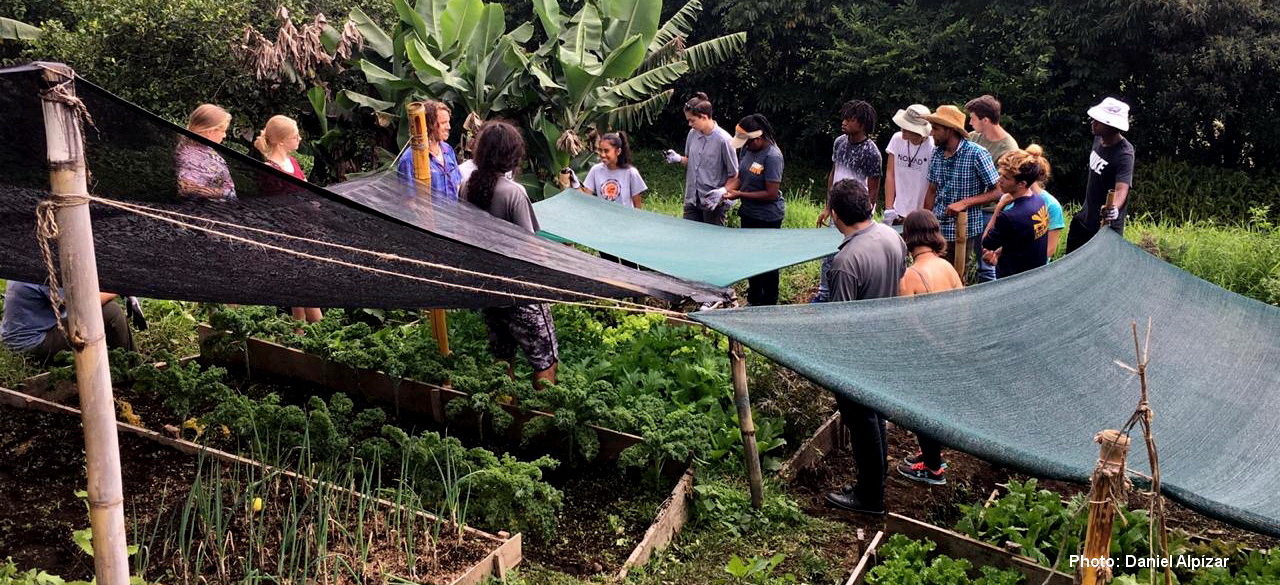Blog series: Daniel Alpízar | The real cost of the battle against Covid-19: The case of Costa Rica and implications for food security
Written by Daniel Alpízar
The small nation of Costa Rica has been mentioned by the international media as a successful case in the battle against Covid-19. In the middle of the pandemic torment in Latin-American countries – now mentioned as the next epicenter of the pandemic – this country has managed to maintain the contagion rate very low in comparison with other countries worldwide. With less than 1300 Covid-19 cases by the beginning of June and only 10 deaths, Costa Rica has the lowest mortality rate in Latin America. What was a formula for success?
A rapid response was key to containing the spread of the virus. With only 10 cases of Covid-19 on the 8th of March, the Government took actions such as mobility restriction, closure of schools, and international borders. Even though a strict quarantine was never imposed until today, social distancing was effective. However, most Latin-American countries taking similar actions found themselves in a catastrophic situation. The real components of the formula to fight the novel virus are dated to the foundation of the Second Republic in 1948.
Since the abolishment of the army in 1948, more public funds have been invested in education and health. Costa Rica allocates 8% of GDP for universal health care: every human being has access to state health care services, they cover 95% of the population. This robust system is key to making Costa Rica resilient to the 2020 pandemic. Access to water as a fundamental human right and a key factor to stop spreading the virus through sanitation played a crucial role as well. 98% of Costa Ricans have access to water, which is high compared to neighboring nations in Central America where only 27% have access to water in rural areas and 72% in urban areas.
Another decisive factor for Costa Rica to become successful in curbing the infection rate was the effectiveness of social distancing measures. According to BBC World News based on a google report, visits to shops and restaurants have been decreased by 86% and to beaches by 82% since the start of the pandemic. Without serious legal consequences in place for those who violate social distancing, the population showed discipline in following the governmental instructions.
In spite of the so far successful management of Covid-19 in terms of human health, the closure of the borders and travel restrictions from other countries to Costa Rica make the economy tremble. The borders will remain closed until the 15th of June and CANATUR (National Chamber of Tourism) estimates a loss of $2 billion in GDP. Tourism has the biggest share in Costa Rica’s GDP, it is an economic sector that employs most people in rural areas after agriculture. The reduction in employment in the tourism sector and all the productive chains involved will potentially increase poverty incidence from 21.1% to 29%, and will therefore limit the accessibility of food for poor households due to the decrease in household income.
The availability of food in Costa Rica will also be affected by other external factors. The contraction of global aggregate demand and disruption in the global production and supply chains is expected to decrease the global supply of goods and jeopardize the food security of middle-income countries in a globalized world. In Costa Rica, 57% of the rice and 98% of corn was imported in 2018. The falling commodity prices and trade restrictions Costa Rica has with neighboring countries will have a negative effect on food stability. The financial markets and the increase in external financing will negatively impact Costa Rica’s economy, marked by some experts and the International Monetary Fund as an “Unprecedented economic crisis“. These economic shocks will more severely affect the most vulnerable population given the increase in social inequality in Costa Rica, which holds one of the highest inequality indexes in Latin America. During an economic crisis, inequality puts pressure on food resources to be more accessible and available to higher-income households.
The real cost of the fight against Covid-19 will be more visible in the mid- and long-term. Even though Costa Rica seems to be tackling the virus contagion rate successfully, the battle continues and this rate can increase any moment. The country is walking on thin ice given the exposure to illegal migrants from Nicaragua, who seek health attendance in Costa Rica because of the precarious situation in their own country. Moreover, released social distance measures tend to increase the number of Covid-19 cases in Costa Rica. It will be a long walk to win the war against Covid-19 but the victims are somehow inevitable with poor people suffering the most.


